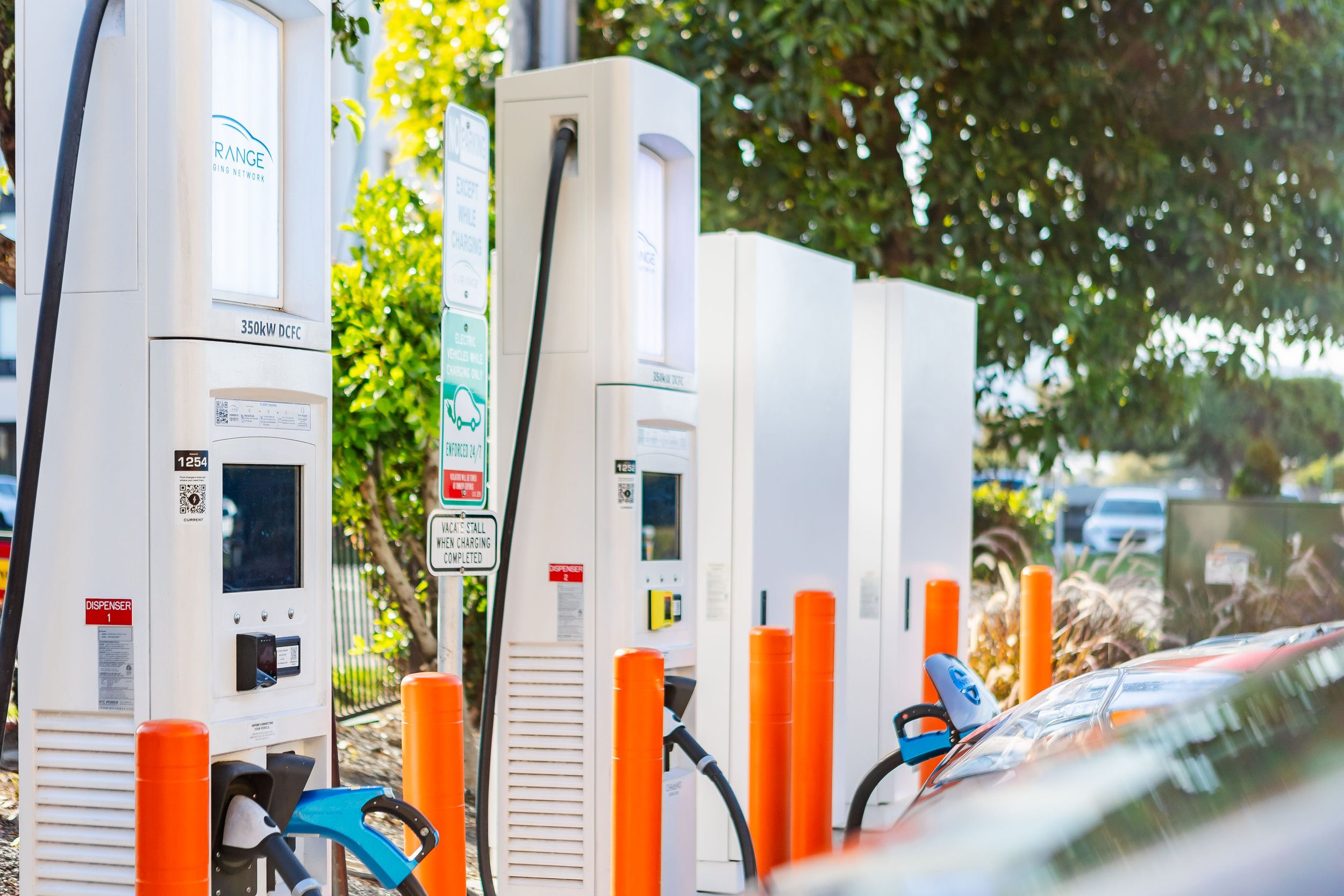
EV Charging 101
Electric vehicle types
HEV
Hybrid Electric Vehicles
An HEV combines an internal combustion engine (ICE) with an electric motor. These vehicles may be able to run on battery only on a very limited range
or supplement power to the ICE engine.
Battery is charged by the ICE engine or by regenerative braking.
Does not have a charging port. Therefore is unable to charge at a charging station.
PHEV
Plug-In Hybrid Electric Vehicle
Similar to an HEV, in that it has both a battery and an ICE. These vehicles typically have a little larger battery for additional electric range.
A PHEV is a hybrid electric vehicle that has a battery that can be recharged by being plugged in, as well as a combustion engine.
Typically these vehicles can only be charges with an AC Level 2 charging station.
BEV
Battery Electric Vehicle
A BEV is a fully electric vehicle (no ICE).
The greatest potential for environmental and operating cost savings.
Battery ranges can vary from 100 to 400+ miles.
The majority of BEV’s can charge with both slower level 2 chargers and DC fast chargers.
DC fast charging power is dependent upon vehicle capability, the charging station power (and/or amps), or even occasionally; utility demand requests and responses or network load management settings, that manage power from the grid to provide capacity to other infrastructure and/or to keep costs down to the network and EV driver.
AC Chargers
Charging from residential and light commercial electrical supplies for slow low power charging.
Easy on the vehicle and grid.
PHEV and BEV Vehicles.
DC Chargers
High power charging from commercial facilities.
High power Direct Current (DC) straight to your EV battery.
BEV Vehicles.
-
AC Level 1
Typical residential plug-in chargers from a regular 110V outlet.
Power: Up to 1.7KW
Full Charge Time (Long Range EV): 2-3 days
-
AC Level 2
Commercial grade charging from a 240/208V supply.
Power: Typically 7-11kW
Full Charge Time (Long Range EV): 10-12 hours
-
Level 3 (DC)
Power: 30-50kW
Full Charge Time (Long Range EV): 3-4 hours
-
Level 4 (DC) and beyond
EV Range’s Standard for DC Fast Charging!
Power: 100-350kW
Full Charge Time (Long Range EV): 20-60 minutes
-

J1772
(Level 1 and 2)
This connector is capable of AC Level 1 and AC Level 2 charging only.
-

CHAdeMO
(DC Fast Charging - Level 3)
A standard connector for DC fast charging developed in Japan. Many Asian automakers have released vehicles in North America that use CHAdeMO, although recently some have begun to switch to the higher-power CCS. Tesla offers a CHAdeMO adaptor for their cars, making it possible for Tesla vehicles to charge at public DCFC stations with CHAdeMO.
-

CCS
(DC Fast Charging - Level 3 & 4)
Combined Charging System (CCS) is an upgraded fast charge version of the J1772 which is used by most US and European automakers. Level 4 charging is made possible by liquid cooling the cable to reduce weight.
-

NACS
(DC Fast Charging - Level 3 & 4)
Until recently, Tesla's connector has exclusively been available for only Tesla vehicles only, since the connector was proprietary to Tesla. That is until the announcement of opening the connector to others and renaming the connector to NACS.
EV Range shall be providing NACS connectors on stations in the near future given the announcement of numerous automakers.






